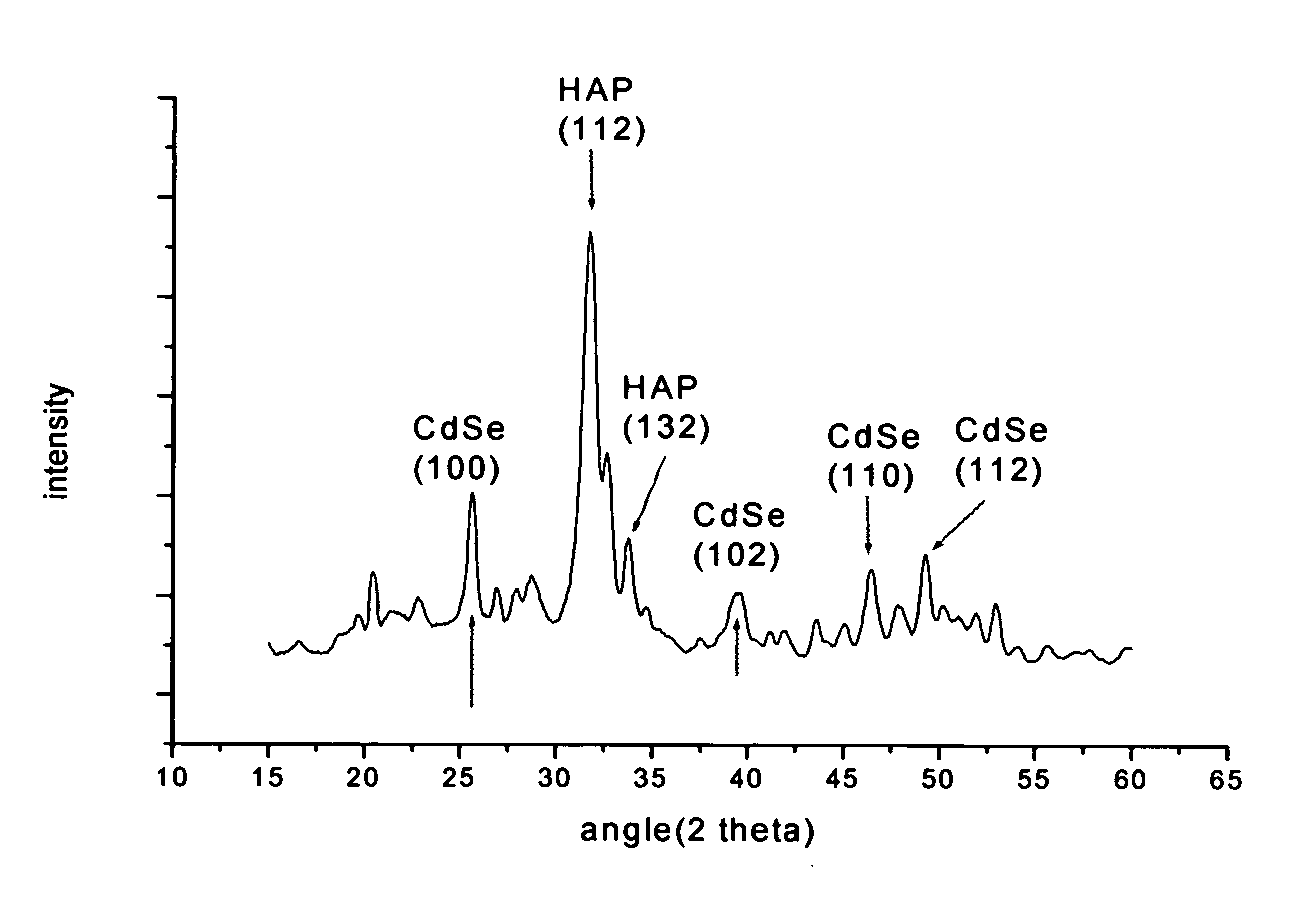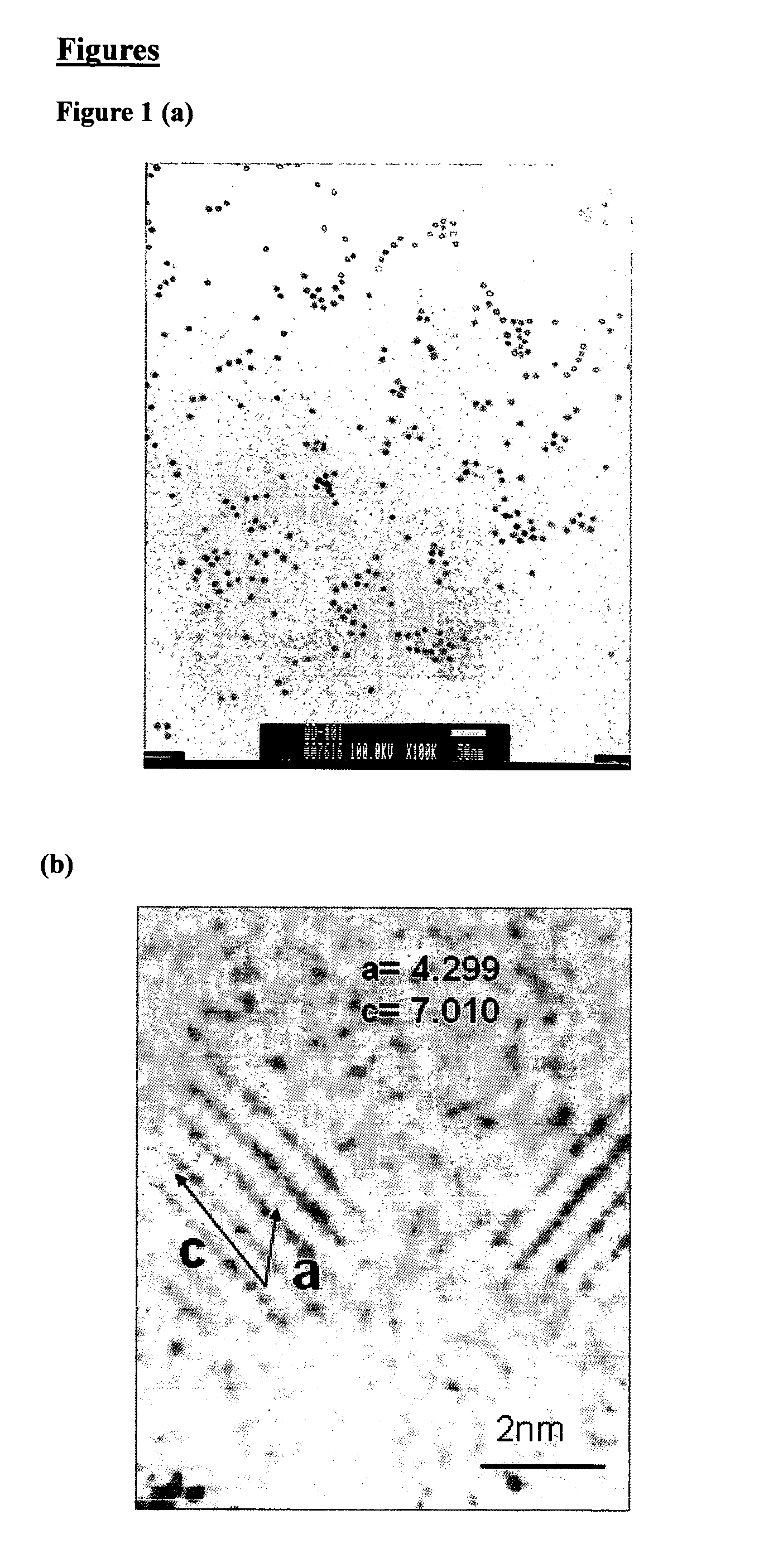Traceable nanocrystals and preparation thereof
a nanocrystal and nanotechnology, applied in the field of preparation of traceable nanocrystals, can solve the problems of hap coating degradation or coming off, severe limitation on compositions, and failure to meet the requirements of prior ar
- Summary
- Abstract
- Description
- Claims
- Application Information
AI Technical Summary
Benefits of technology
Problems solved by technology
Method used
Image
Examples
example
Synthesis, Hydrophile and Mineralization of the Quantum Dot or Magnetic Nanocrystal
[0045] The synthetic method developed by Bawendi et al. (Bawendi et al., J. Phys. Chem. B, 101, 9463-9475, 1997) for organic metal synthesis to prevent CdSe from oxidizing. The outside of CdSe covered with a layer of ZnS which proceeded as slowly added 1 ml ZnS stock solution onto CdSe at 140° C., then cooled until 100° C. Terminated the reactioin after heating 1 hour. In order to let the quantum dot or magnetic nanocrystal have reactive functional group which used for precipetated calcium phosphate nanocrystal (HAp or TCP) later, 0.01 mmol CdSe / ZnS crystal has been solved in 1 ml chloroform solution, and added 0.5 ml DMF solution and 1 ml overdose Mercaptoacetic acid to react thoroughly by stir vigorously for 1 day at room temperature. At this time, the quantum dot or magnetic nanocrystal has already had carboxyl group.
[0046] The quantum dot or magnetic nanocrystal having carboxyl group was soaked...
PUM
| Property | Measurement | Unit |
|---|---|---|
| size | aaaaa | aaaaa |
| size | aaaaa | aaaaa |
| size | aaaaa | aaaaa |
Abstract
Description
Claims
Application Information
 Login to View More
Login to View More - R&D
- Intellectual Property
- Life Sciences
- Materials
- Tech Scout
- Unparalleled Data Quality
- Higher Quality Content
- 60% Fewer Hallucinations
Browse by: Latest US Patents, China's latest patents, Technical Efficacy Thesaurus, Application Domain, Technology Topic, Popular Technical Reports.
© 2025 PatSnap. All rights reserved.Legal|Privacy policy|Modern Slavery Act Transparency Statement|Sitemap|About US| Contact US: help@patsnap.com



